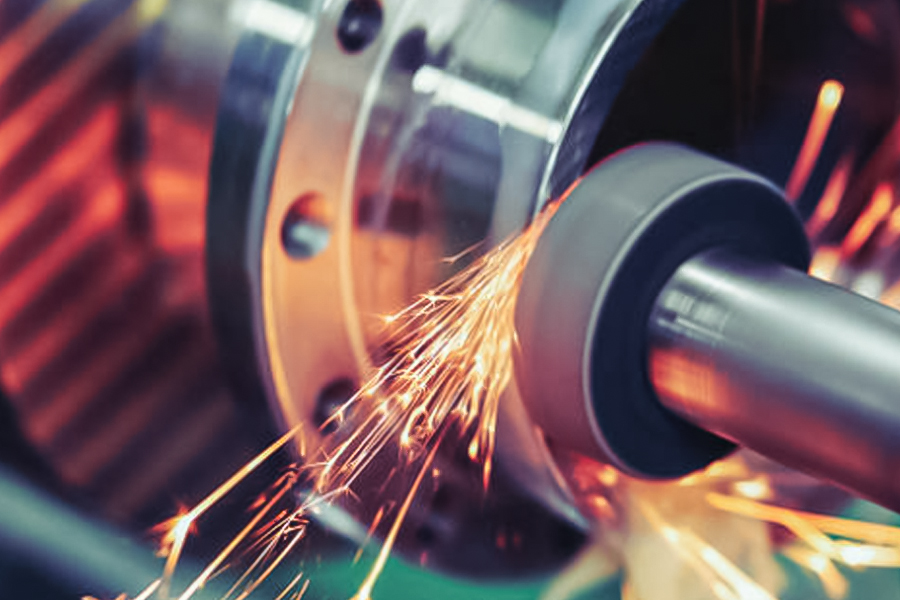Datetime:2025-08-29
In modern manufacturing, multi-axis machining centers and five-axis systems play a vital role in meeting the demands of increasingly complex part machining. However, the question of which offers superior machining efficiency often confuses companies when selecting equipment. This article aims to delve deeper into this crucial question. We will focus on the performance of these two advanced machines in real-world production, particularly when handling complex part machining tasks. By comparing specific data on work-per-piece time, tool change frequency, and overall production capacity, and drawing on real-world application cases in typical applications such as automotive molds and aerospace structural parts, we strive to objectively present their respective strengths and limitations. More importantly, this article will help readers understand that selecting equipment should go beyond simply comparing the number of axes, but rather require a comprehensive consideration of key factors such as machining accuracy, production flexibility, and overall cost-effectiveness.
Multi-Axis and Five-Axis Efficiency Measurements
Actual production data often provides a clearer picture of a machine's true capabilities. When focusing on the core metric of machining efficiency, the performance differences between multi-axis machining centers and five-axis systems are quite significant. In typical complex part machining scenarios, such as manufacturing aerospace components with multiple curved surfaces, multi-axis machining centers, thanks to their increased interlocking axes, often enable more facets to be cut in a single setup. This directly translates into shorter processing times per part, eliminating the valuable time lost by resetting the clamping position required by five-axis systems. Furthermore, fewer setups mean less frequent tool changes, further increasing the effective cutting time. For example, actual comparative data from an automotive mold factory showed that, when machining the same complex bumper mold, using a multi-axis machining center reduced overall machining time by nearly 15% compared to using traditional five-axis equipment, demonstrating a significant advantage in continuous machining.
Complex Part Machining Performance
When working with complex shapes and high-precision parts, such as aircraft engine blades or automotive precision molds, the performance difference between multi-axis machining centers and five-axis systems becomes more pronounced. Multi-axis machining centers, thanks to their increased interlocking axes, often offer greater flexibility when machining extremely complex surfaces or internal structures requiring cutting from multiple challenging angles. It can machine more surfaces in a single setup, effectively reducing the time required for repeated workpiece disassembly and repositioning. For these parts, frequent tool changes or fixture adjustments are key factors impacting overall machining efficiency. Multi-axis machines significantly improve single-piece machining efficiency by reducing these non-cutting times. In contrast, even powerful five-axis machines may require more setups, adjustments, or tool changes when processing certain highly complex geometries, resulting in slightly lower overall efficiency.
Avoid Axis Count Misconceptions in Machine Selection
In reality, simply comparing multi-axis machining centers and five-axis machines based on their number of axes, or arguing over which is "more efficient," doesn't directly address the core issue of machine selection. Choosing a machine depends on whether it precisely matches your machining requirements. Don't be misled by the simplistic notion that "more axes is better." Machine selection requires comprehensive consideration of several key factors: What are the specific precision requirements for machining complex parts? What are the expected machining efficiency and changeover speed (flexibility) on the production line? Furthermore, are the overall project budget and cost control objectives clear? For example, while five-axis equipment theoretically can handle some complex part machining scenarios, multi-axis machining centers, with their more compact structure and straightforward programming, may actually offer superior single-piece machining efficiency while also reducing equipment investment and maintenance costs. Conversely, for aviation structural parts requiring extremely high spatial positioning precision, the unique motion capabilities of five-axis equipment may be irreplaceable. Therefore, the key to equipment selection lies in a thorough analysis of the specific part's process characteristics, the factory's own production pace, and the long-term investment-output benefits, rather than simply focusing on the number of axes.
The data demonstrates that simply comparing multi-axis and five-axis machining centers in terms of machining efficiency is inherently biased. Whether it's the precise curved surfaces of automotive molds or the complex cavities of aviation structural parts, the measured differences in single-piece production cycle time and tool change frequency often depend on the specific part's geometry and process strategy. Equipment with greater spindle linkage capabilities may offer advantages when tackling extremely complex contours, but this also comes with increased equipment investment, maintenance costs, and programming complexity. The production case of automotive turbocharger housings clearly demonstrates that the key to equipment selection lies in precisely matching product requirements. When part complexity does not reach a certain threshold, equipment with a higher axis count can actually reduce overall production efficiency due to lengthy commissioning times and high energy consumption (accounting for approximately 18%-22% of total costs). Equipment selection decisions should always be centered around precision requirements, production flexibility, and overall lifecycle cost-effectiveness, rather than blindly pursuing a high number of axes. This is similar to how navigation requires real-time traffic information, not just dashboard numbers.